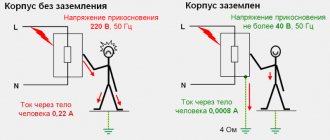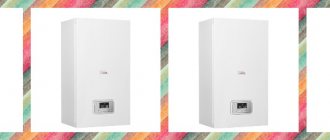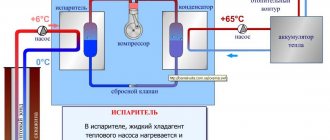Heat meters: main types, advantages and disadvantages
Most often, a heat meter is not a monolithic device, but a structure consisting of several components. These include various sensors, determinants of the amount of energy consumed, etc. It is worth noting that the number of elements of each individual set is strictly individual.
Depending on the scope of application, heat meters are divided into industrial and individual.
Let's consider the classification of individual heating meters, as well as their advantages and disadvantages:
- Mechanical (tachometer) . The most simplified option of all possible. It is installed on the main pipe, from which heat is distributed throughout the room. There are several types of mechanical heat devices: with an impeller, screws or turbine. The advantages of thermal appliances of this type include: reasonable price, ease of installation and maintenance, as well as low repair costs. But there are several more disadvantages: a high-quality heat source is required, the presence of a cleaning filter, the impossibility of recording the time consumed at the current moment, prone to frequent damage to the moving part of the device.
Advice. If you have decided to purchase a meter for a heating battery, you must understand that its main task is not to save heat, but to measure its actual use, which allows you to pay for the heat consumed, and not according to standard calculations by the utility service.
Types of heat meters
A heat meter for a battery is always classified by the device that measures the amount of hot water. Temperature sensors are the same everywhere.
The most commonly installed types of counting devices are:
- Mechanical.
- Electromagnetic.
- Ultrasonic.
- Vortex.
Mechanical devices
Their main element is a part that can rotate as the coolant passes through the meter. Moreover, one revolution corresponds to a certain amount of water passed through. The device calculates the number of revolutions and determines the volume of coolant used. The final digits are transmitted to the calculator.
The rotating part varies, and therefore companies produce several classes of mechanical water meter. Most often, vane and turbine meters are used in heating networks.
In the first, the rotation part is an impeller, which is placed so that its axis is perpendicular to the water flow. Turbine devices contain a turbine. Manufacturers place it so that its axis and the coolant flow are parallel.
The best heat meters according to consumer reviews
We bring to your attention the most popular models of heat meters:
- Elf DN 20 mm. Tachometer heat meter made in Poland. Designed for low thermal power (up to 85 kW). Capable of remotely reading readings from automation. Absolutely resistant to magnetic influences, has wide communication capabilities.
As you can see, choosing the optimal heat meter model is a fairly simple process. The main thing in this matter is a clear understanding of your needs, the desire and ability to spend a certain amount of money and follow the advice presented above. Happy shopping!
Nuances of using counters
Different types of devices show the obtained indicators in different units. They can determine thermal energy in the following quantities:
- Gcal (gigacalorie).
- kWh (kilowatt/hour).
- mW (megawatt).
- GJ (gigajoule).
Utilities calculate heat in Gcal. Therefore, when taking meter readings, you need to pay attention to the physical quantity, and if you do not want to constantly convert one quantity to another, you should look for devices that calculate heat in Gcal.
The meters themselves allow you to determine the amount of heat entering the apartment. They will partially reduce heating costs. However, for additional savings, it is recommended to install control valves on the batteries. This will allow you to optimize heating and, if the system is overly productive, reduce the heating of your apartment. It is not recommended to completely shut off the radiators, since the heat meter should display at least the minimum values.
Heat meters
Options for installing metering devices
The benefits of installing metering devices are obvious. The homeowner will pay only for the heat received, without forking out for losses during its transportation. To maximize savings, you should remove all sources of possible heat loss in the house: install sealed window frames, insulate the room, etc. There can be two options for installing the meter.
Method #1 - communal meter
Residents of high-rise buildings can solve the problem of heat metering by installing a common building meter. These, by the way, are the most inexpensive option. After all, the price of a heat meter, which is not cheap, and its installation will be “scattered” among the owners of several apartments. The resulting amount will be quite acceptable. The readings of such a device are taken once a month. Payments are distributed to each apartment according to its area. Moreover, if the service provider does not fulfill its part of the contract in good faith and does not provide the agreed temperature in the house, it will be obliged to return the money paid to the residents.
You should start by holding a building-wide meeting of apartment owners. It is necessary to discuss all the nuances of the upcoming installation and determine who will take meter readings and issue receipts for payment. The decision of the meeting must be recorded in the minutes, after which you can contact the management company with a written application to connect the device.
The most inexpensive heat metering method is a common house meter. However, for a number of reasons, an economic effect may not be expected from it.
Method #2 - individual measuring instruments
The main advantage of a common house device is its low cost. However, the economic effect of its use may be much lower than expected. And there are many reasons for this. For example, insufficiently insulated entrances or neighbors’ apartments, as a result of which heat loss is prohibitively large. Therefore, many people choose individual heating meters, which are installed directly in the apartment. This is a more expensive but very effective option.
Distributors are installed on each radiator in the apartment. Over the course of a month, they record the temperature of the batteries, tracking the slightest changes. Based on this information, the heat payment is calculated
Before planning to install a custom metering device, you should become familiar with some technical limitations. The thermal flow meter is mounted on the riser leading to the apartment. In old multi-apartment buildings, vertical distribution of heating pipes was most often carried out. This means that the apartment may have several risers, on each of which it is necessary to install a device, which is extremely unprofitable. A solution to the problem could be the installation of special meters on heating radiators, but such equipment is not used in our country, although this is common practice in European countries.
Manufacturers of metering devices propose installing so-called distributors in houses with vertical wiring, which measure coolant flow based on the temperature difference on the surface of the battery and in the air in the room. Another solution to the problem is a common house metering device. In buildings with horizontal wiring, installing any heating meters in an apartment is not complicated at all. Compact models of devices are mounted on a pipe supplying coolant to the room or, in some cases, on a return pipeline.
Sales of meters
A heat meter (heat calculator) measures the mass and temperature of water in the heating system that passes through its cross section. It provides calculation of the amount of thermal energy released.
Heat metering is regulated by the norms of the Federal Law “On Energy Saving”, which obliges all multi-apartment buildings to be equipped with common metering devices, and if we are talking about construction from 2012 and later, apartment-by-apartment thermal IPUs should also be installed.
These requirements pursue several goals: to reduce thoughtless consumption of natural resources, to ensure that citizens and management companies treat them responsibly, and to fairly distribute the burden of costs for utility resources.
Sometimes in apartments of the same size the temperature differs by several degrees, but the owners are forced to pay the same. Without individual devices, the management company does not timely repair building facades, does not eliminate cracks and cracks, and writes off losses on the house at the expense of consumers, violating their rights. To exclude this, it is advisable to equip those apartments in which this is not required by law with heat meters.
Related article: Heat meter in an apartment
Principle of operation
The heat meter always determines and uses two indicators:
- The amount of coolant passed through the pipes.
- Changes in the temperature of the coolant as it passes through all the radiators of the apartment. It is detected by two sensors.
By combining this data, it determines the total amount of heat entering the apartment. The deduction is made according to the formula: Q = c*m*(t1-t2), where
- c is the specific heat capacity of the coolant (since water often plays its role, this indicator is unchanged and equals 4.187 kJ/kg*C°),
- m represents the mass of water or other heated liquid,
- t1 and t2 are the temperature levels of the water passing through the supply and return pipes, respectively. The unit of temperature is C°.
The unit of measurement for the final figure is Gcal (gigacalorie).
The computer receives all the data from temperature sensors and the meter, carries out calculations and records the final figure in the archive. You can see the saved results on the device screen or on a regular optical interface.
Equipment types
Based on the design features of the device, there are three main types of heat meters (built on the basis of water meters and sensors):
- mechanical or tachometer (the simplest type, divided into vane and turbine varieties) - independent of electricity, cost the least and are easy to operate.
- Ultrasonic - based on the analysis of the acoustic effect of an ultrasonic wave in a liquid, accurate and expensive, used only in production.
- Electromagnetic ones, where a magnetic field is involved, are used on a limited list of objects where their adequate functioning can be ensured.
Known by area of use:
- Individual household appliances – differ in diameter up to 25 mm, mounted in residential and office premises.
- Industrial metering device - has a diameter from 25 to 40 mm, used at industrial facilities, in boiler rooms, in apartment buildings as a common one.
A frequent question: if the housing has horizontal wiring, then installing a flow meter pipeline is possible, but if we are talking about vertical wiring, how to get a heat meter? According to these parameters, heat distributors will be the solution. Their sensors are designed to measure the temperature of the radiator surface, and an electronic computer calculates the energy consumed.
Main types of heating system wiring in a residential building
Multi-storey buildings can have one of the heating system layout options - vertical or horizontal. Old buildings, such as Khrushchev and Stalin buildings, are mainly characterized by a vertical heating system. In this case, the heating network circuit can be one- or two-pipe. However, the flow of coolants through interfloor levels has a sequence from bottom to top and top to bottom. The main disadvantages of vertical wiring:
The heating distribution system in a multi-storey building can be vertical or horizontal
- The heat is distributed unevenly, because the coolant is driven along the interfloor circuit with a vertical orientation. As a result, apartments on different floors will receive unequal amounts of heat. Thus, apartments in a 10-story building up to the 5th floor will be heated better than the last 5 floors.
- The complex process of regulating the flow of heating into the radiators and the need to install on each battery an additional jumper in the form of a pipe, the so-called bypass, which regulates the flow of coolant in the radiator.
- Constant reconfiguration of shut-off valves depending on changes in pressure and temperature of the water supplied to the system.
The main disadvantage of vertical wiring is the difficulty of installing an individual heating meter in an apartment, because you will need to purchase a separate heat meter for each riser, which significantly increases costs. In this case, another tool for measuring energy consumption is more often used - a heat distributor, the installation of which will require the consent of at least 50% of the residents of the entrance.
Most new buildings are distinguished by horizontal heating distribution, when there is also a vertical riser designed to distribute the coolant to different floors, and a return line. From both the first and second risers, horizontal pipes are installed into each apartment, carrying out both the supply and return outflow of water from the system. The return line serves to collect cooled water and transport it back to the heating station. The advantages of horizontal wiring include:
- the ability to regulate the temperature of the heat supply to the radiators of each apartment;
- carrying out system repair work in a separate circuit without disconnecting other apartments;
- the ability to disconnect each circuit separately from the heating.
Diagram of a horizontal heating system in an apartment building
Advantages of our products
- Heat meters provide savings of up to 60% on home heating costs, because take into account the actual resource supplied.
- Allows you to optimize consumption using temperature regulators on radiators.
- If you do not receive enough heat resources, you will be able to pay smaller amounts, or achieve improved heating quality using meter readings.
- Losses of a multi-storey building will affect you to the minimum extent limited by law.
- If you buy a heat meter with the ability to transmit data remotely, you will eliminate the need to remember the dates for submitting information.
Offers
Our organization’s online store offers products from well-known and trusted manufacturers that have the necessary certificates and guarantees. We will help you choose the ideal equipment for your conditions, at a low price and with delivery throughout Russia. We will install heat meters quickly, professionally, and complete the necessary documents.
The service for connecting a set of equipment involves the installation of contact thermometers (water supply pipes and return lines are involved), and this will also include the installation of a computer and converter. There are solid particles in the coolant; To avoid clogging of the IPU, a coarse filter should be installed. The installed unit is covered by a warranty.
Detailed information is available by phone or through an online consultant.
Why is it necessary to install a heating meter in a residential area?
The lack of high-quality heating due to improper operation of the heating network often forces apartment residents to look for alternative heat sources. At the same time, the cause of poor heating is not always a breakdown in the heating network. Often, housing and communal services workers, in an effort to save money, tighten the valve, which reduces the flow of hot water, which is especially felt by residents of the upper floors of high-rise buildings.
Quite often, due to poor performance of the heating network, it is necessary to look for alternative heat sources
This results in insufficiently warm batteries and the need to use electric heating devices, which, in turn, entails increased energy costs. Heating in an apartment does not become cheaper. The result is that users have to overpay on all fronts.
Important! An installed and registered heat meter for the battery will allow you to pay only for the heat consumed by a particular apartment, and for nothing more.
Another reason for high payments is often the difference in the temperature of the water that comes out of the boiler room and the one that goes directly into the apartment. Often, the temperature of the water in the radiator is significantly lower than normal, which occurs due to heat loss on the main line due to poor insulation or damaged pipes. Even in this situation, all costs fall on the shoulders of the end consumer.
Sometimes the situation can be completely different when the radiators are so hot that you have to open the windows to ventilate the room. In this case, you have to pay, in fact, for heating the street, which is also not considered correct. Regulators, which are often installed together with heat meters for heating, will help you avoid problems.
Scheme of operation of a heating meter in an apartment
The main advantages of installing a heat meter in an apartment
The heat energy meter is mounted directly on the pipe through which heating enters the apartment, and calculates only the amount of heat actually used. If you additionally install a thermostat to the device that controls the flow of water, you will be able to control the flow of hot water, which can be reduced if necessary. As a result of the work done, the final consumption figure will be significantly lower than that determined by the standards.
After installing and registering a heat meter in an apartment, you can be sure that only the costs of heating the home will be taken into account in the payment. You will not have to pay for heat losses during transportation or associated costs resulting from poor-quality services provided by the heat generating company after installation. Heat metering is carried out based on the following indicators:
- consumption of hot water delivered to the apartment;
- water temperature at the entrance to the heating system and at the exit from the apartment.
As a result of expenses, the amount of heat consumption per day, month or year, calculated in hectacalories, is determined. Modern apartment heat meters have the ability to store data on monthly heat consumption for a long period, usually up to 10 years. Some devices have an additional option that allows you to connect it to a computer and transmit readings via the Internet.
The main advantage of the meter is the ability to significantly save money
If there is any doubt whether a heating meter in an apartment is profitable, you can pay attention to a simple calculation: the price of the device together with installation is from 7 thousand rubles, and the minimum service life is 12 years. Over the course of one season, you can save from 4 thousand rubles on heating using a meter, which depends on the area of the apartment. Accordingly, over 12 years of use, at least 48 thousand rubles are saved, and this figure is far from final.
Helpful information! The only option when you should think about whether it is necessary and possible to install a heating meter in an apartment is if the housing has a vertical connection system and has not one riser, but several. In this situation, each riser needs its own meter, and this is already expensive. In such a situation, it is recommended to install one device per entrance.
The costs of operating the meter are insignificant, because basically you only pay for calling a specialist to check the device, which is carried out no more than once every 5 years. It is also sometimes necessary to replace the batteries, but this also has to be done by those who do not use the meter.
What you need to know
When deciding whether such a device is necessary, it is worth remembering that it is not a means of saving, but makes it possible to pay only for current consumption, and not for the total, divided among all residents. The heat meter for the battery in the apartment notes any fluctuations in the temperature regime and allows you to keep track of consumption only if the thermostat is working correctly and the unit is properly installed. If before leaving home, for example for work, you reduce the temperature by at least 1 °C, then by the end of the month you can notice an economic bonus of 6%.











